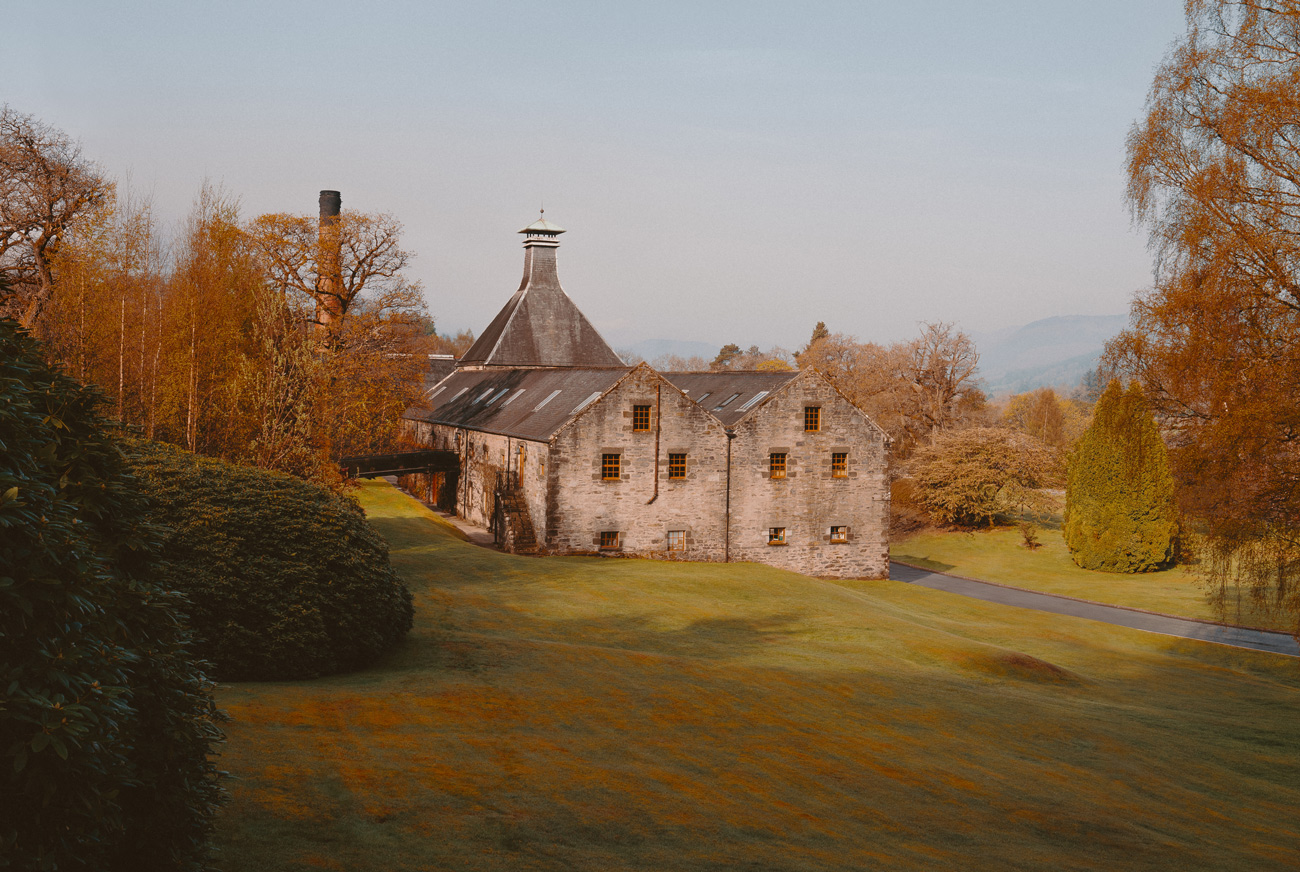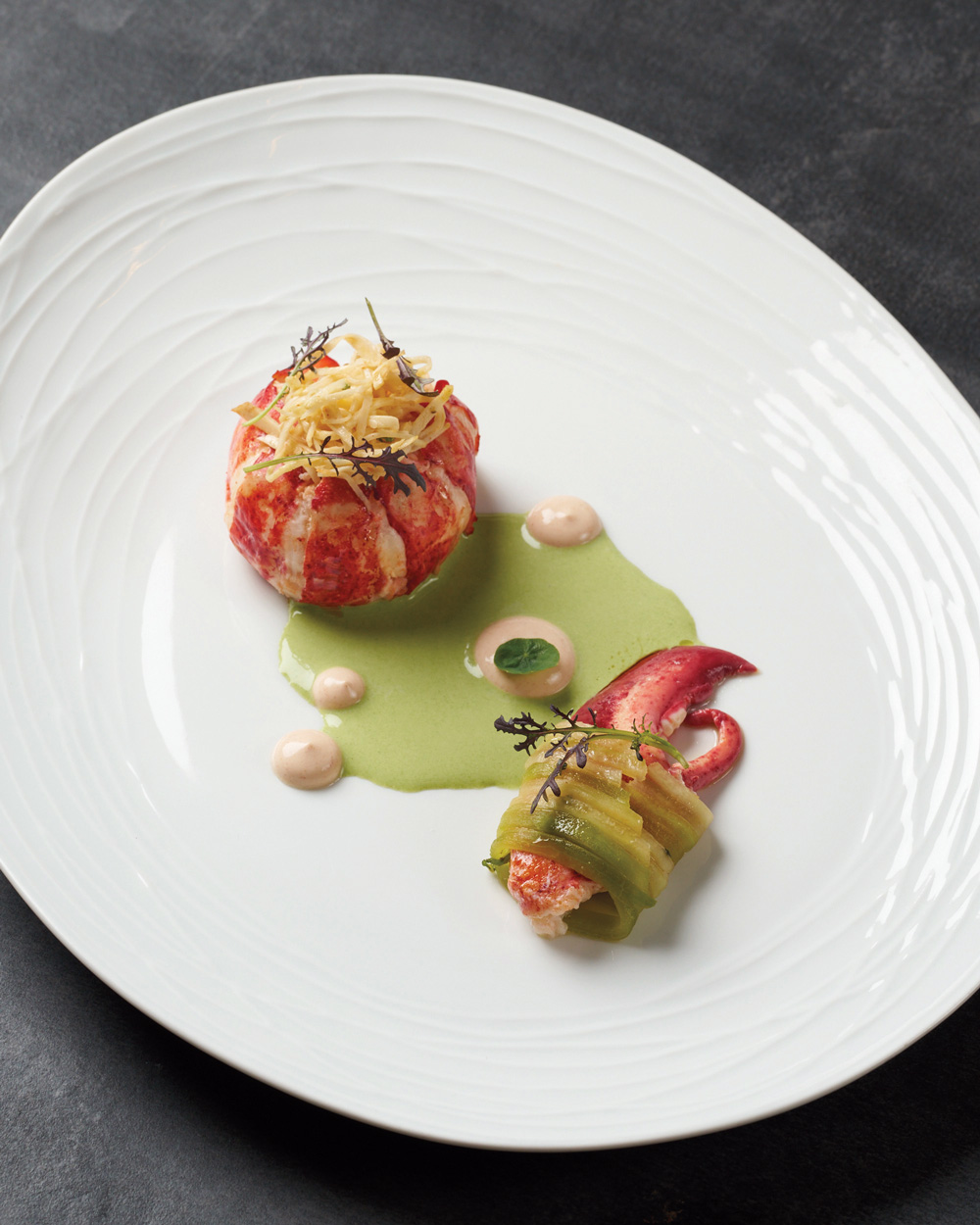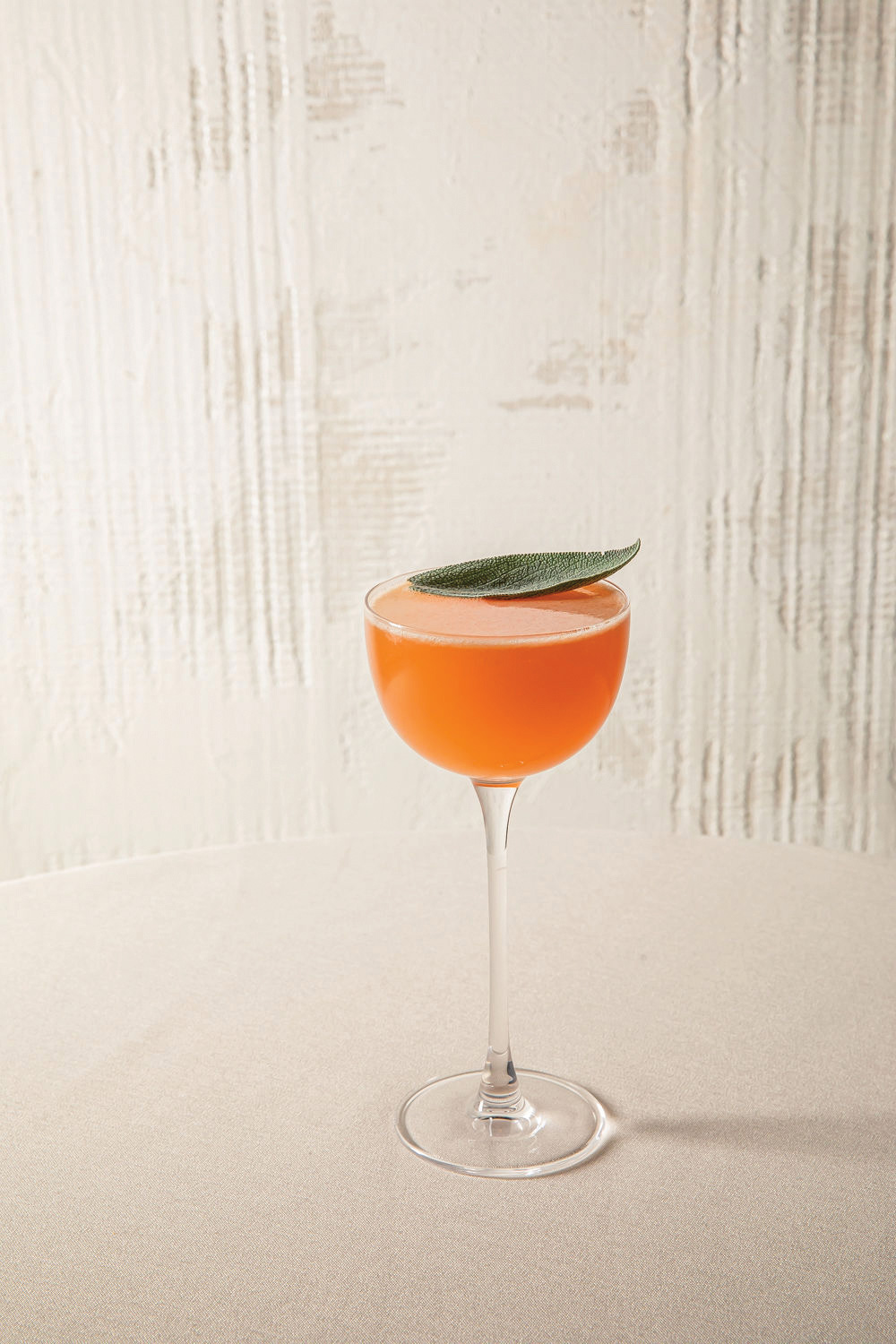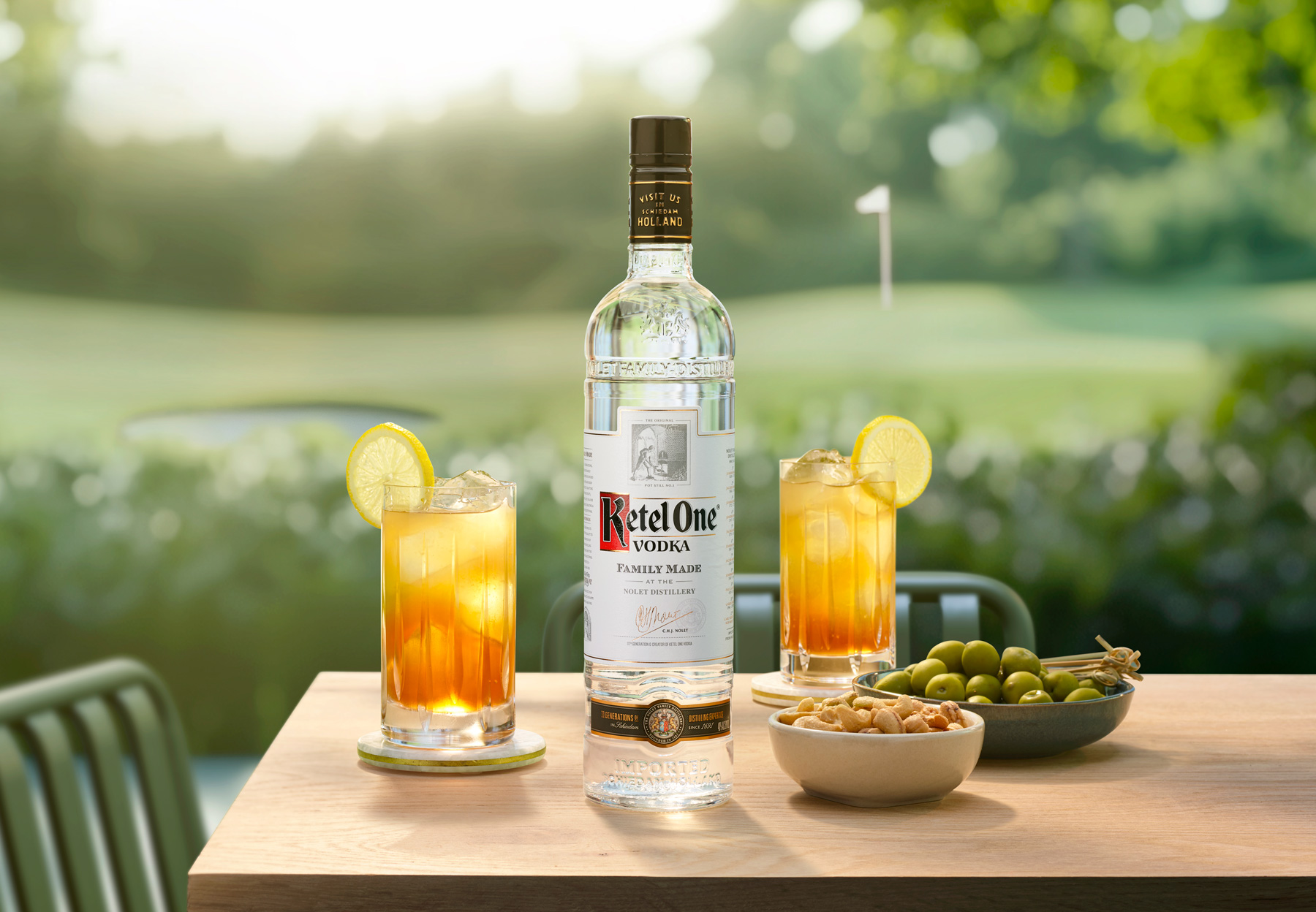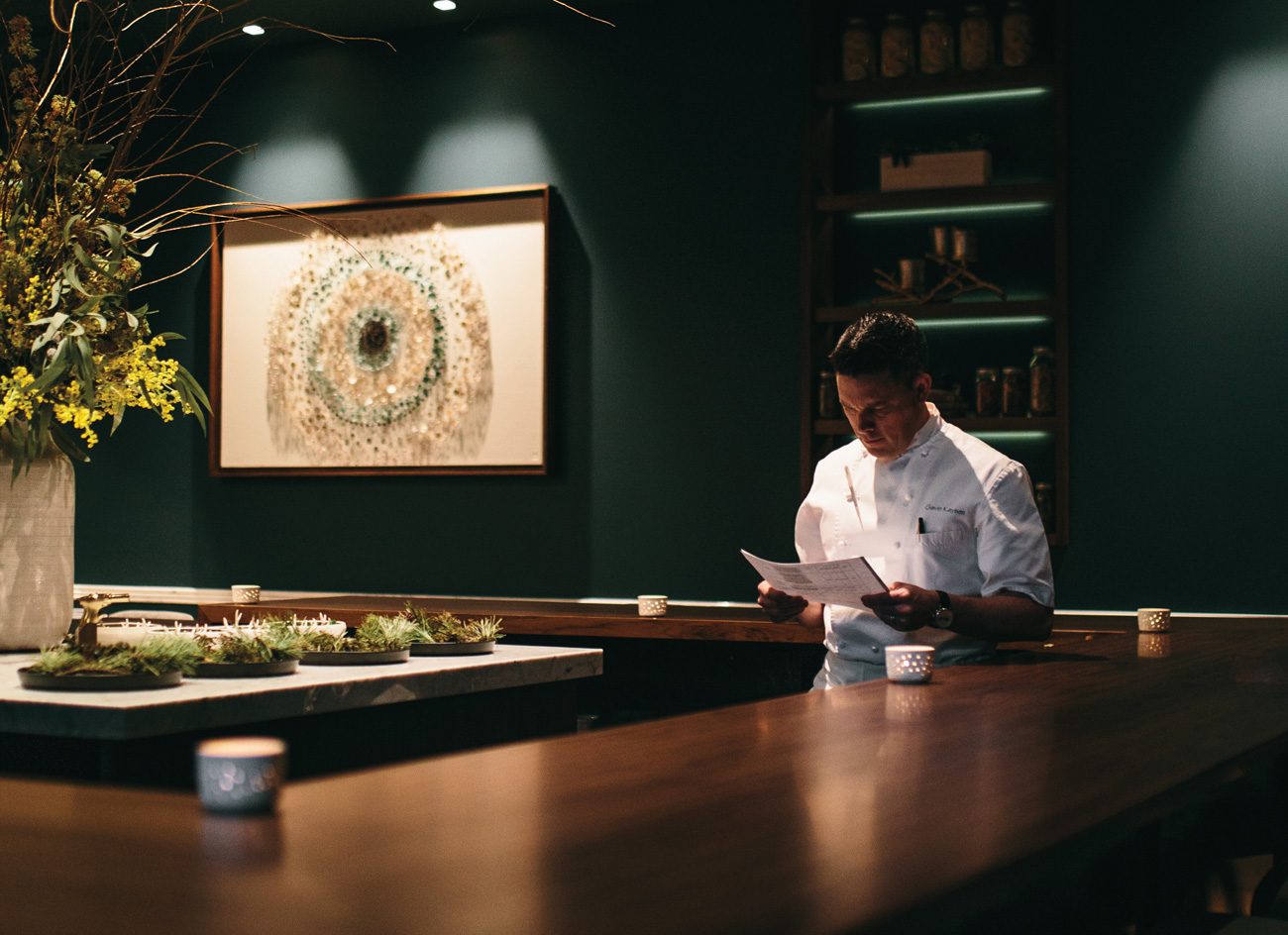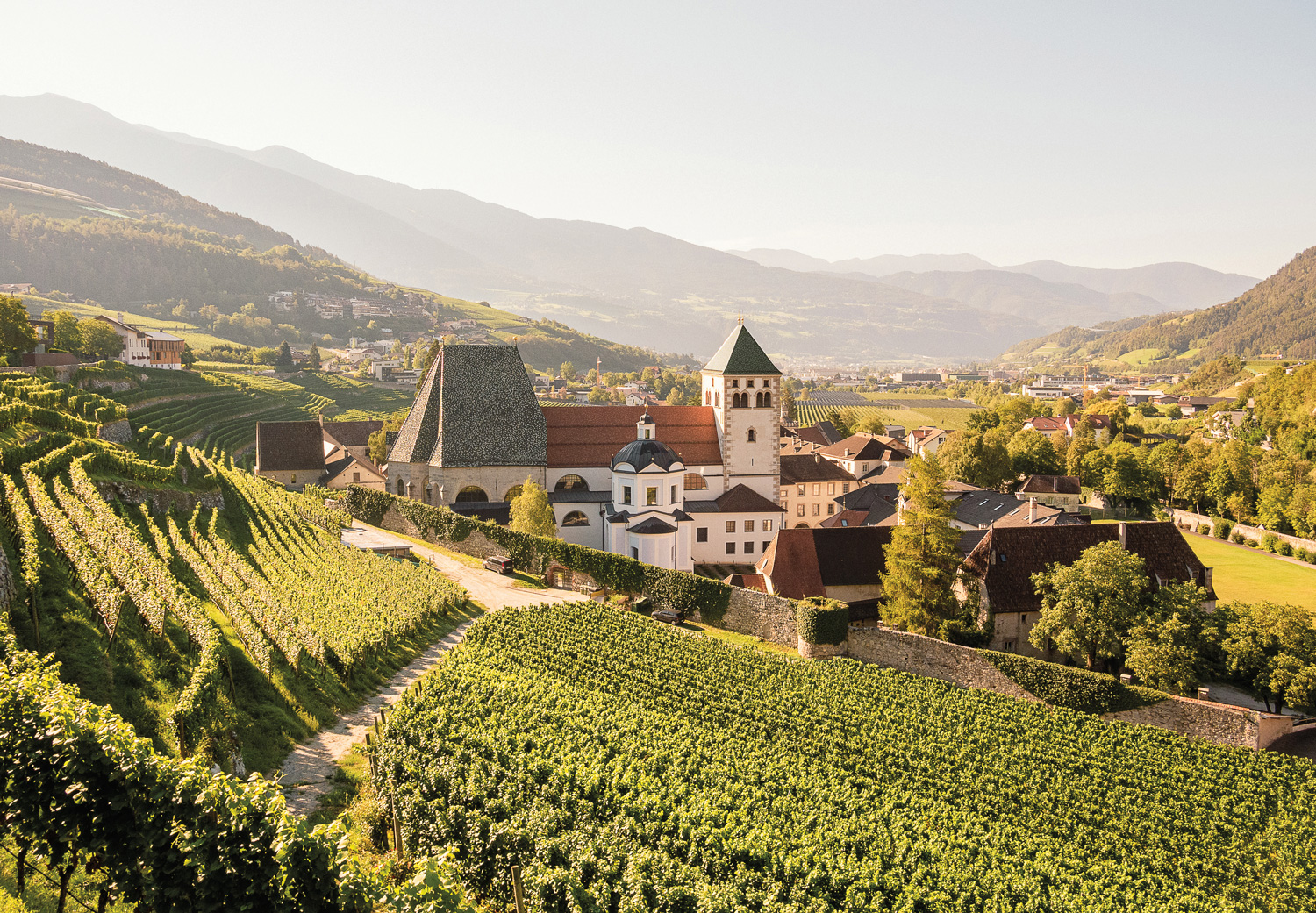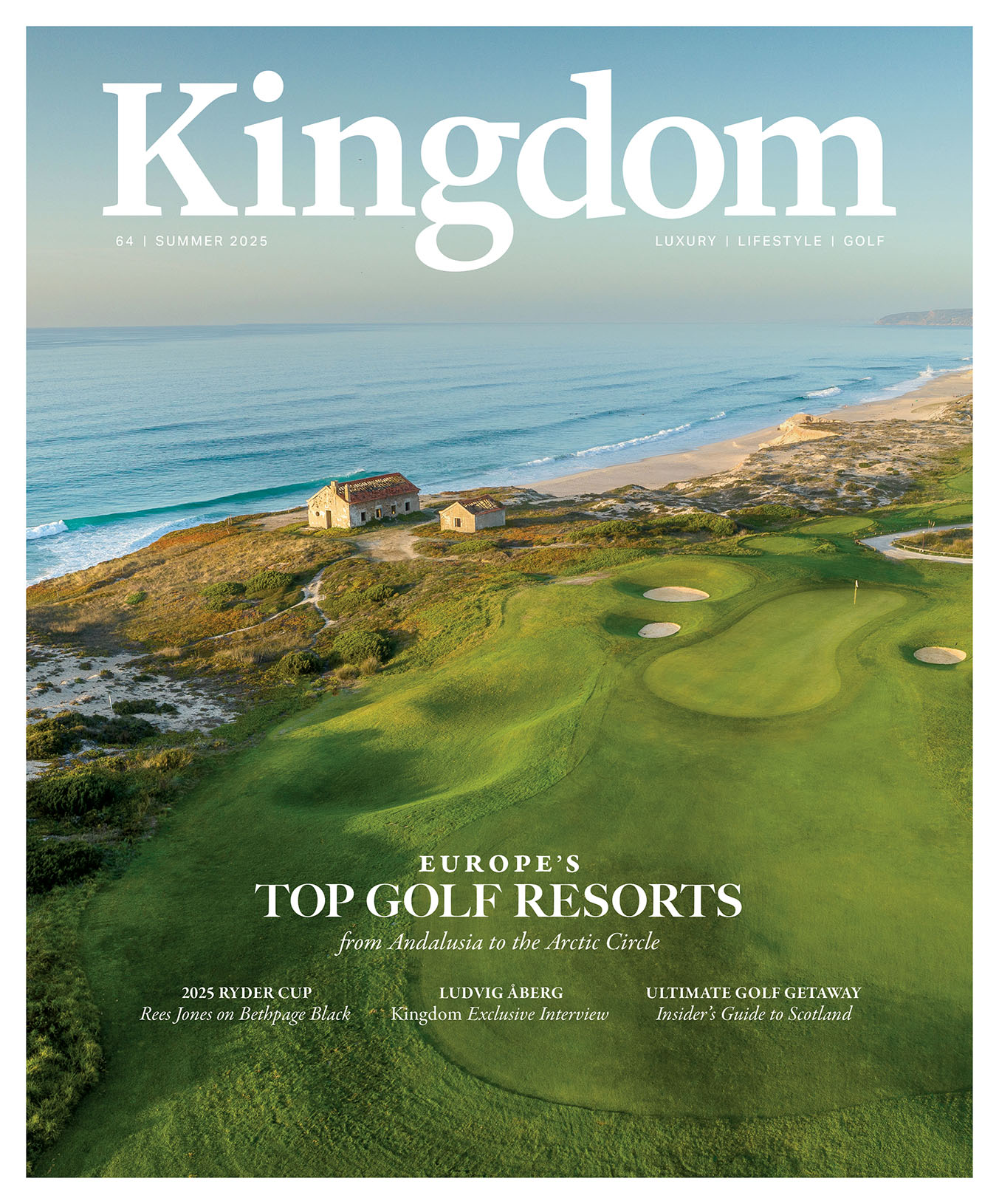“The tertiary flavor and the roundness of the whisky, it really changes the way it behaves with food,” he says, which explains why the blended Scotch—Dewar’s 18 Year Old, to be specific—works better as a flambé for his cashew-and-wild-mushroom pâté than does Cognac or Armagnac, both of which Kreuther tested. In fact, the chef initially tried the recipe using both the 12- and 15-year-old Dewar’s expressions, too. Ultimately, it was the 18’s depth of flavor that made the difference. “I like the 18 Year best to cook with,” he says. “It’s a very friendly, complex whisky.”
Not long afterward, Kreuther took inspiration from the Dewar’s 18 Year Old and created a dish he calls Montauk Lobster “Flambée Au Whisky.” It’s essentially a butter-basted Long Island lobster tail that is gently pan seared, then flambéed with two tablespoons of Dewar’s 18. “Our job [as chefs] is to figure out how to extract the best flavors of a product,” says Kreuther, who found that the sweetness and salinity of the lobster meat mirrored some of the secondary notes of the whisky. By coating the meat with a thin layer of Scotch during the flambé process, he found that the spirit’s maritime quality enhanced and expanded the lobster’s natural flavor. “There’s a harmonious way that they come together.”
